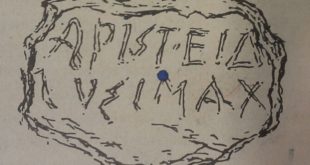The heroism of Harmodius and Aristogeiton was a myth, but Athenian democracy was not. In the two great wars of the fifth century — the Persian and the Peloponnesian — the Athenians clearly felt they had what would now be called a “way of life” which was worth fighting for. Cleisthenes, although he was of nobler blood than Solon, gave more power to the poor than Solon had done. Nearly all Athenian citizens now had a vote in the Assembly, a body which approved laws discussed in the Council of Five Hundred. The Five Hundred were elected by the citizens and anyone over thirty could be a member. As well as taking his share in lawmaking and government a citizen also played his part as a juryman in seeing that justice was done. Even the archons could be brought to trial when their year of office was over, if they were thought to have misused their power. There was a kind of police force consisting of Scythian archers which Peisistratus had set up. But they were the citizens’ servants, not his masters. There is often a good deal of argument about what is meant by a “free” country. A useful test is to ask: Can police knock on the door in the middle of the night and take people away to death or imprisonment without a public trial? If this “knock on the door” question is asked about fifth-century Athens the answer to it would be: No. There were no secret police and there were no mysterious disappearances in the middle of the night. These privileges of citizenship, however, were not shared by everyone living in Attica. “An Athenian citizen” does not mean the same as “a resident in Athens”. Neither women nor slaves might vote and immigrants from other …
Read More »A Tyrant Who Was Not Tyrannical
A tyrant’s first problem was to seize power. Peisistratus had to solve this problem three times. In 560 he came before a meeting of the Assembly wounded and bleeding, alleging that his political opponents had attacked him. Sympathisers voted him a body-guard, with the aid of which he was able to seize power, but his opponents soon forced him to take flight. His next descent on the city was made in a chariot, in which he was accompanied by a handsome woman dressed up as Athena. He alleged that his companion was in fact Athena and that she had chosen him to rule her city. No doubt this escapade, if it really took place, impressed the simpler supporters of Peisistratus and amused the wiser ones. Anyway he again established himself as tyrant and after another short spell of power was again thrown out. This time he stayed away ten years. When he returned for the third time, in 546, he made a less spectacular entry than on previous occasions, but remained to rule until his death in 527. During that period his talent for display found a more useful outlet. He organised the annual spring festival of Dionysus, at which the great tragic dramas of the following century were performed and the Panathenaea, a festival in honour of Athena, which included the recitation of poetry as well as athletics and drew competitors from all over Greece. He saw to it that Athens had buildings and sculptures worthy of her guests. We have become so accustomed to thinking of Athens as the most splendid city in Greece that it is hard to realise how insignificant she was before about the year 600. Solon having prepared the way, Peisistratus put Athens on the map, not only by skillful showmanship but also by …
Read More »

